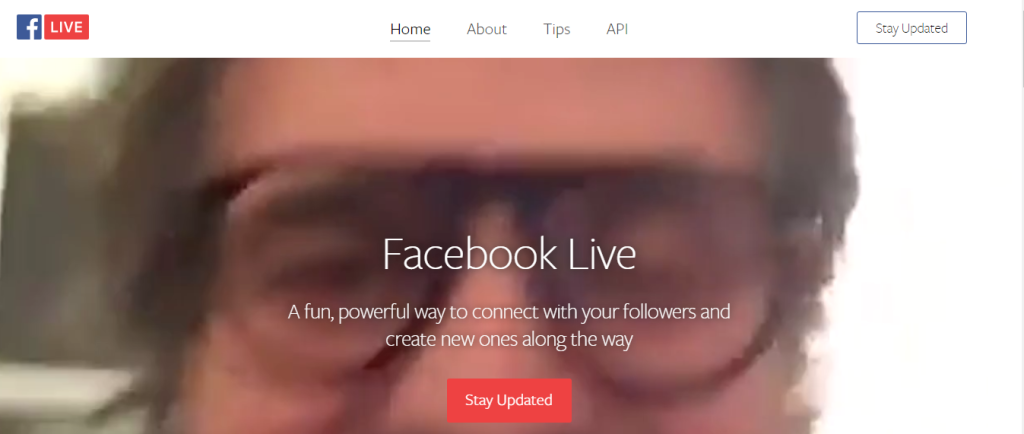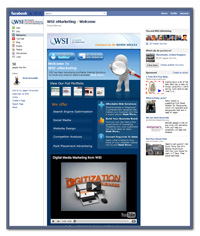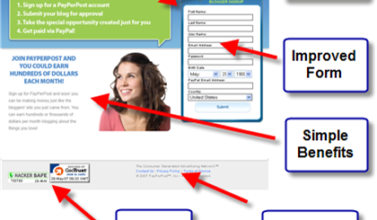
As we moved into 2016 Facebook announced and rolled out 2 big new features and overhauled an old one. You can’t have missed the new Facebook Reactions! Facebook is serving nearly 1.5 billion people worldwide, though it seems an unassailable monolith in the world of Social Networks it’s creators know that updates and changes are key to keeping users engaged and loyal. Along with constant evolution and incremental changes to the platform there is another core part of Facebook’s longevity strategy. Facebook is trying to consolidate vast amounts of media and be the channel through which many different every-day internet tasks are carried out.
The two new features were Facebook Live and Facebook Instant Articles. The third big change to hit Facebook in 2016 was the addition of ‘Reactions’ which supplement the ‘Like’ function and allow for users to indicate an emotional response to the content. Each of these features have had significant effects on the Facebook eco-system and have required businesses, marketers and publishers to carefully put together new considerations for their Facebook strategy.
Facebook Reactions
For a long time people have wondered exactly what a ‘Like’ means. Obviously it changes depending on context. Where one may wish to give support to a friend who writes a status about a bereavement or illness a ‘Like’ doesn’t seem entirely appropriate. Such a vague and general action is open to interpretation. Similarly a great article may receive few ‘Likes’ because the topic it is on is controversial or emotive and the person in question may not wish to be misconstrued as supporting the subject of the article rather than the article itself.

Facebook put an extraordinary amount of research into crafting the perfect set of ‘Reactions.’ From the base emotions to the final character designs every aspect of the change was tested and analysed to find the optimum characters and emotions to boost engagement. The characters are animated and when moused over their intended emotional display becomes even clearer. The final 6 ‘Reactions’ represent the sentiments most often shared on Facebook content and great pains have been taken to ensure they contain no ambiguity.
The three most popular ‘Reactions’ show beneath a post allowing a user scanning through their Newsfeed to know the general sentiment of an article without opening it. With Mobile representing Facebook’s key user base one of their key development focuses is naturally going to be making engagement simpler. The depth of a ‘Reaction’ is much more than a ‘Like’ with almost no extra effort. People who want to comment but simply can’t be bothered when they’re on their phone will leave a ‘Reaction’ where previously they would have contributed nothing, or so it is Facebook’s hope.
What does this mean for businesses and Marketers?
First and foremost it means a mountain of new data. No longer is an ambiguous ‘Like’ the norm. Now you can know exactly what reaction your content has caused. Track which ‘Reactions’ correspond with you most successful content, you might be surprised. ‘Safe’ content is great for nurturing relationships with customers you’ve already secured but time and time again content that makes people angry or anxious proves to be the most shared. All this new data should help guide you to better Content Marketing and Social Media Marketing. Whilst content that generates the ‘Love Reaction’ may not be your widest reaching it will highlight your most engaged fans, keep track of them and turn them into Brand Evangelists when you can.
Facebook Live
Facebook Live is a video live streaming service built directly into Facebook. You immediately notice how similar it is to Periscope. As Youtube has added live streaming capability and new platforms like Blab have begun to gain momentum it’s clear Facebook is attempting to stop users feeling they need to go anywhere else for a live streaming service.
Facebook Live allows a user to reach the audience they’ve already cultivated and earned on Facebook as opposed to trying to convince fans to join another platform or network. When a user is ‘Live’ they appear in the Newsfeed of their fans and fans can subscribe to be sent a push notification whenever that user begins to stream. Along with the expected features like live comment functionality Facebook Live also sends recorded streams to sit on the user’s timeline. This recording can then be ‘boosted’ like normal content and remains as a useful piece of content that your fans can access any time.
You can gather insights from the video broadcast and the post of the recording following completion. It’s reasonable to assume that Facebook will continue to promote it’s live streaming feature, while it’s on everyone’s mind because of Facebook’s own marketing efforts it makes sense to at least tentatively take your first steps into video marketing. Live feedback in the form of ‘Reactions’ flying across your screen will let you know how you’re doing.
What does this mean for businesses and Marketers?
The problem with Video Marketing, especially in the interactive sense has almost always been capturing an initial audience. Convincing fans to go out of their way and set up accounts to view your content is a delicate task which even the most adept marketer can fail at. Facebook Live avoids this problem whilst incorporating the vast majority of features that competing live streaming platforms do. Live represents a lowered barrier to entry for interactive video marketing that few businesses are taking advantage as of now. With that in mind simply streaming for the sake of it is undesirable. In short, if you have any ideas of getting into video marketing or anything you want to say directly to your fans then this is the perfect way to do it. If neither of those apply to you then simply remember the platform is there should you ever need it!
Facebook Instant Articles
A large portion of Facebook users will navigate away from a link they’ve clicked on their mobile device if the page doesn’t load within 2-5 seconds. Facebook Instant Articles is a lightweight platform designed to provide a faster, cleaner experience for mobile users. Facebook claim Instant Articles load 10x quicker than a standard mobile web article. By requiring publishers to conform to a standard set of rules Facebook can keep the platform streamlined and keep traffic within Facebook.

Instant Articles support video, slideshows, maps and many other formats of content. The larger publishing platforms such as WordPress and Medium have already produced integrations allowing their users to access Instant Article functionality with the minimum of hassle. Instant Articles also comes with built-in as serving capability, if a publisher sells their own ad space they keep 100% of that revenue. If a publisher needs Facebook to sell the ad space for them then they’ll receive 70% of the ad revenue and Facebook will keep the other 30%.
The Instant Article hosted by Facebook is not your website, as such views on the article will not count in your analytics as referrals from Facebook, there are work-arounds for this problem however. It’s only users who click the related link on a Mobile Device will be directed to the Instant Article, otherwise they will be sent to your webpage as normal. Uptake of Instant Articles has been far from universal, the majority of large publishers are using Instant Articles for only a small portion of their content. The platform is now open to all publishers and hopefully we will being to get some more diverse data in the coming months.
What does this mean for businesses and Marketers?
First and foremost this update once again highlights that you must be optimised for mobile devices in order to flourish in 2016. The Instant Articles platform is still a little limited, many kinds of content simply won’t work well with it. The flip-side is that those that do should see the touted increases in sharing and decreases in abandonment of articles. If you’re not using a publishing platform like WordPress that is compatible with Instant Articles you may be limiting your marketing efforts. You may be able to develop an integration and it pays to look into such things before you need them! Finally the ability to serve ads means that if you are a content creator but not a ‘publisher’ you may be able to gain some previously untapped revenue on the back of your content marketing.
A Word of Caution
With the roll-out of Instant Articles, Facebook Live and the updated Professional Services it is clear that Facebook is trying to position itself at the centre of everyone’s normal internet usage. This applies to both business use and personal use. We use our Facebook information to log into dozens of other services, host our content there and use apps owned or at least part-controlled by Facebook, such as WhatsApp and Instagram. This is no prophetic warning or conspiracy theory, just experience talking. It’s never good to rely to heavily on a platform you have no control over. We diversify and mediate risk in most areas of business for solid reasons. Ease of access and promises of having everything integrated in one place shouldn’t drown those reasons out.
Take for example LinkedIn, which months ago completely changed how it’s ‘Groups’ feature worked and saw people who had built followings for years simply removed from their position. Whether by design or fault it’s been shown time and again that social media platforms have a habit of changing overnight with little warning and very rarely roll-back these changes. If you wake up one day and Facebook Live is no more you should have other ways to produce and spread your video content. If not then you’re setting yourself up to fail.
Related Post
What’s the single...
Adam Vincenzini from Comms Corner recently posted a very good article which I think goes...
- January 25, 2011
- By Rob Thomas
- Blogging
Effective Facebook Marketing...
With over 600 million users, Facebook represents the single most connected platform on...
- March 1, 2011
- By Nadine Thomas
- Latest Online Trends
Monitor, Influence and Lead...
Get Actively Involved in the Outcome of Search Results Don’t take negative publicity...
- April 28, 2011
- By Rob Thomas
- ORM
Free Online Reputation...
Listen to What’s Being Said About You Online (Free online reputation monitoring...
- May 5, 2011
- By Rob Thomas
- ORM
How To Drive Sales With...
Landing pages have long been the primary tool of the web-savvy marketer. Whether the...
- June 12, 2011
- By Nadine Thomas
- e-Commerce
Content Sharing Via Social...
Target marketing to meet your business goals Is your business using social media channels...
- June 15, 2011
- By Nadine Thomas
- Digital Marketing













Leave a Comments